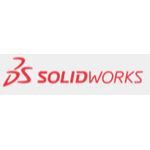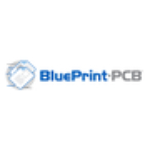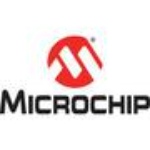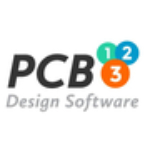TechnologyCounter provides genuine, unbiased real user reviews to help buyers make informed decisions. We may earn a referral fee when you purchase through our links, at no extra cost to you.
List of Best PCB Design Software
Showing 1 - 14 of 14 productsAltium Designer is a software tool used by electronic designers to create, design, and document their electronic circuits. With its intuitive interface features, Altium Designer streamlines the design process and helps users bring their ideas to life...Read Altium Designer Reviews
Fusion 360 is a design software that seamlessly combines CAD, CAM, and CAE tools for a streamlined design experience. With its advanced features and user-friendly interface, Fusion 360 offers a new level of efficiency and creativity to design project...Read Fusion 360 Reviews
Multisim is a PCB design software that caters to the needs of Enterprises, SMEs and StartUps alike. It offers a complete range of solutions for both Web App and Android platforms, making it a one-stop-shop for all PCB design needs...Read Multisim Reviews
EasyEDA is an innovative and user-friendly online platform for designing and simulating electronic circuits. With a powerful yet intuitive interface, EasyEDA allows users of all skill levels to create and test electronic designs effortlessly. Say goo...Read EasyEDA Reviews
SolidWorks is a 3D CAD software that provides innovative solutions for designers, engineers, and manufacturers. With its user-friendly interface features, SolidWorks allows users to create, simulate, and visualize their designs with precision and eff...Read SolidWorks Reviews
ExpressPCB Plus, the ultimate PCB design software for all your needs. This user-friendly program allows you to quickly and effortlessly create custom circuit boards with precision and ease. With its advanced features interface, ExpressPCB Plus makes...Read ExpressPCB Plus Reviews
Are you tired of the stress and frustration of designing and managing PCB layouts? Look no further than CAM350! This powerful software simplifies the entire process, saving you time and increasing efficiency. With CAM350, you can expect precise resul...Read CAM350 Reviews
CADSTAR the advanced software solution for electronic design and engineering. With intuitive features and a user-friendly interface, CADSTAR simplifies the process of creating complex printed circuit boards, allowing for swift is a design. Say goodby...Read CADSTAR Reviews
Allegro PCB Editor, a top-rated software for designing printed circuit boards. With its user-friendly interface and powerful features, Allegro PCB Editor streamlines the PCB design process, making it faster, more precise, is a . From schematic captur...Read Allegro PCB Editor Reviews
BluePrint-PCB, is a solution for all your printed circuit board designing needs. With its advanced features and user-friendly interface, this software is a game-changer in the world of PCB design. Say goodbye to complexity and hello to efficiency wit...Read BluePrint-PCB Reviews
PathWave EM Design is a software that brings precision and efficiency to electromagnetic simulation. With its advanced features interface, it empowers engineers and researchers to quickly analyze and optimize the performance of their designs. Whether...Read PathWave EM Design Reviews
DFMStream is a software solution for optimizing manufacturing processes. With its advanced features and user-friendly interface, DFMStream streamlines and simplifies the production process, eliminating errors and increasing efficiency. Now you can ac...Read DFMStream Reviews
MPLAB Analog Designer is a software that allows engineers and designers to simulate and analyze analog circuits with precision and efficiency. With user-friendly features and a robust design environment, this software offers a seamless experience for...Read MPLAB Analog Designer Reviews
PCB123 is a solution for all your circuit board needs. Designed with user-friendly features technology, PCB123 allows you to effortlessly create, design, and produce high-quality printed circuit boards. With its intuitive interface and robust capabil...Read PCB123 Reviews
PCB123 is a solution for all your circuit board needs. Designed with user-friendly features technology, PCB123 allows you to effortlessly create, design, and produce high-quality printed circuit boards. With its intuitive interface and robust capabil...Read PCB123 Reviews
- What Is PCB Design Software?
- Top Reasons Why Businesses Need PCB Design Software?
- What Are the Top Key Features of PCB Design Software?
- What Are the Top Benefits of PCB Design Software?
- What Are the Steps to Choose the Right PCB Design Software?
- What Are the Types of PCB Design Software for Different Industries?
- What Are the Technology Trends for Best PCB Design Software?
- What Are the Deployment Options for PCB Design Software?
What Is PCB Design Software?
PCB design software is a sort of computer-aided design (CAD) tool used to manufacture circuit boards, which serve as the foundation of electrical devices. It enables engineers and other designers to construct a layout of analog and digital circuit components, such as transistors, resistors, and capacitors, as well as lay out the printed circuit board (PCB).
This program enables designers to quickly and correctly develop PCBs that meet current industry requirements such as IPC. The best PCB design software can assist with the full design process, from schematic capture to PCB layout, as well as simulations for signal integrity and electromagnetic compatibility.
Simulations can be used to uncover design flaws as well as give an accurate interpretation of simulation findings. Furthermore, these tools frequently contain features for documenting designs and generating code for automated assembly.
The top PCB design software can save designers a significant amount of time by allowing them to quickly develop a prototype and make adjustments if necessary. It is employed in many industries, including automotive, aerospace, medicine, consumer electronics, and manufacturing. Finally, it can offer far more precision than traditional manual design processes.
Top Reasons Why Businesses Need PCB Design Software?
1. PCB design software enables engineers to develop sophisticated circuit boards faster and with fewer errors.
2. The best PCB design software can automatically generate parts lists and assembly drawings.
3. Low-cost software contributes to lower total development expenses.
4. PCB design software can aid in the design process by providing 3D visualization.
5. This program allows users to integrate with third-party design and analysis software.
6. It facilitates the creation of prototypes and revisions.
7. ECAD technologies that are automated reduce total design time.
8. For certain components, designers can use preset templates and libraries.
9. Software enables design reuse and safe version control.
10. Popular PCB design software enables cost-effective data interchange and supplier collaboration.
11. Designers can establish rules and limitations to verify that a product satisfies its specifications.
12. Before manufacturing, software can uncover design flaws.
13. Electrical signal integrity and power integrity requirements can be assessed using software.
14 There are advanced functions accessible, such as trace spacing and temperature analysis.
15. PCB design software integrates seamlessly with the engineering process.
What Are the Top Key Features of PCB Design Software?
1. Schematic and Layout Design: Engineers and designers can use PCB design software to develop precise schematic drawings of their circuits and components, as well as layout the PCB layout and its components.
2. Component Library: The best PCB design software generally includes component libraries, which simplify the process of creating a PCB by allowing users to choose from a variety of pre-defined components.
3. Auto-Routing: Many PCB design software online packages have automated routing, which can save a significant amount of time by automatically routing the PCB's traces and connections.
4. Trace Optimization: The popular PCB design software can aid in the placement of components to reduce crosstalk and increase signal integrity.
5. 3D Viewing: PCB design software generally includes 3D visualization of the PCB, which can provide essential insight into its design and potential difficulties.
6. Simulation: The software allows for PCB analysis and simulation. This enables engineers to analyze the performance of the circuit before prototyping to ensure that it meets all requirements.
7. Manufacturing Outputs: The top PCB design software typically creates manufacturing outputs such as Gerber files, Excellon drill files, and netlists that can be utilized for production by PCB manufacturing firms.
What Are the Top Benefits of PCB Design Software?
The top benefits of PCB design software are as follows:
1. Increased Design Accuracy: PCB design software allows for exact component placement, which helps to decrease errors and enhance board design quality.
2. Automated Design Process: Design features that are automated, such as automated routing, constraint checking, and 3D modeling, help to reduce inspection time and speed up the design process.
3. Better Collaboration: The best PCB design software facilitates project management and team cooperation, decreasing the requirement for paper-based documentation.
4. Cost Savings: Utilizing top PCB design software aids in lowering the expenses of product development and prototyping.
5. Greater Scalability: Reusable component libraries and template designs accelerate the design process while also making designs more scalable and adaptable.
6. Improved Design Quality: Designers can assess the quality of their design before committing to manufacturing using features such as voltage and waveform analysis.
7. More Accessible Technology: The usage of CAD technologies simplifies difficult PCB designs for designers and engineers of all skill levels.
What Are the Steps to Choose the Right PCB Design Software?
1. Determine the PCB design's unique requirements. Consider the type of board you're designing, its function, the number of layers required, the board's size and form, and other aspects.
2. Make a list of the software's features and capabilities that you require. Consider the many design processes you will be involved in, such as schematic design, component placement, routing, netlists, simulations, and autorouting.
3. Find out what software solutions are available. Examine both well-known and lesser-known programmes, keeping in mind user feedback and multi-platform support.
4. Evaluate the features and costs of various software options. Consider the software's complexity, the cost, and the product's long-term viability.
5. Choose the programme that best suits your requirements and budget. Once you've made your pick, make sure to download and test it to see how it works before committing to it.
What Are the Types of PCB Design Software for Different Industries?
based on the topic. There are a variety of different types of PCB design software available for different industries.
These include:
1. Electrical CAD Design Software: This PCB programme is designed primarily for electrical engineers to develop and manage complex multi-component circuits. It is commonly found in the manufacturing, automotive, aerospace, medical, and telecommunications industries.
2. Multilayer PCB Design Software: This PCB programme is intended for the design of sophisticated multi-layer PCBs. It often includes capabilities like auto-routing, component laying out, 3D views, layer stack-up generation, component embedding, and more. It is commonly utilised in aircraft, military, medical, and telecommunications design.
3. System-on-Chip (SoC) PCB Design Software: This type of PCB design software is intended to aid in the creation of chips and integrated circuits for improved system performance. It usually comes with capabilities like library skinning, simulation, and automatic floorplanning. It is commonly utilised in the automotive, military, medical, and telecommunications industries.
4. Embedded PCB Design Software: This PCB programme is intended for the creation of printed circuit boards (PCBs). It includes interactive debugging, real-time design validation, electrostatic discharge (ESD) analysis, and signal integrity analysis. It is commonly utilised in the aerospace, medical, and telecommunications industries.
What Are the Technology Trends for Best PCB Design Software?
The top PCB design software technology trends include software solutions with a user-friendly interface, as well as efficient and dependable tools for design, simulation, verification, and production planning.
Other developments include automated PCB routing layers enabling faster PCB design, greater component library capabilities, the ability to create multi-layer boards, 3D modeling, drag-and-drop symbol editing, and integration with mechanical CAD software.
Furthermore, there is a tendency towards more specialized features designed for certain PCB design conditions, such as high-speed, high-complexity, power electronics, and radio-frequency boards.
Finally, the rise of cloud-based best PCB design software is gaining traction, since these solutions allow improved access to a global pool of designers while also improving scalability and efficiency.
What Are the Deployment Options for PCB Design Software?
The deployment options for PCB design software vary depending on the software in question. In general, alternatives include web-based software, desktop-installed applications, and cloud-based servers.
1. The functionality provided in web-based versions is often limited, although they are useful for basic design activities including viewing designs.
2. Desktop versions frequently have more complex tools and features, such as 3D viewing, but require the software to be installed.
3. Cloud-based servers offer the most functionalities but often necessitate more setup and upkeep.














